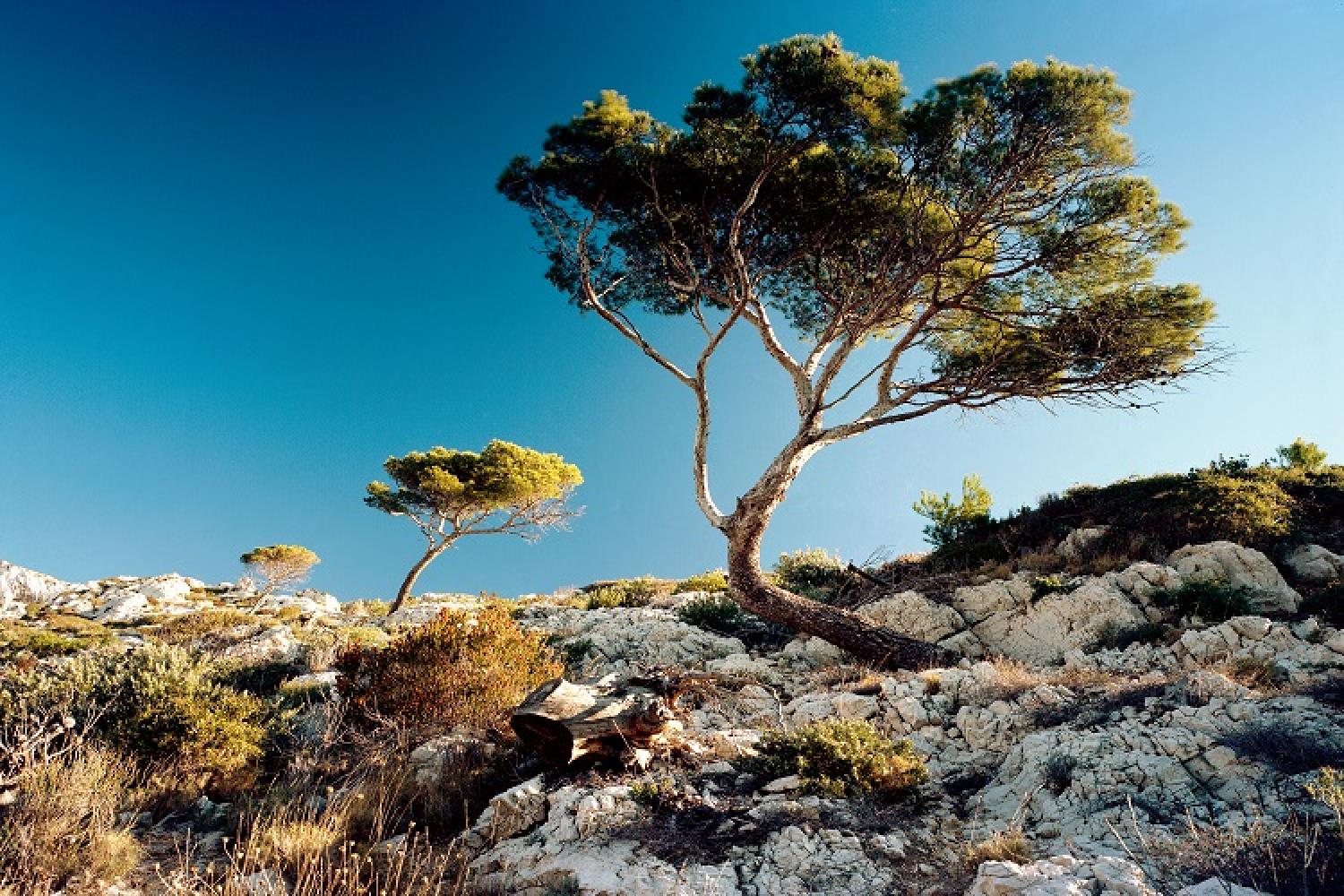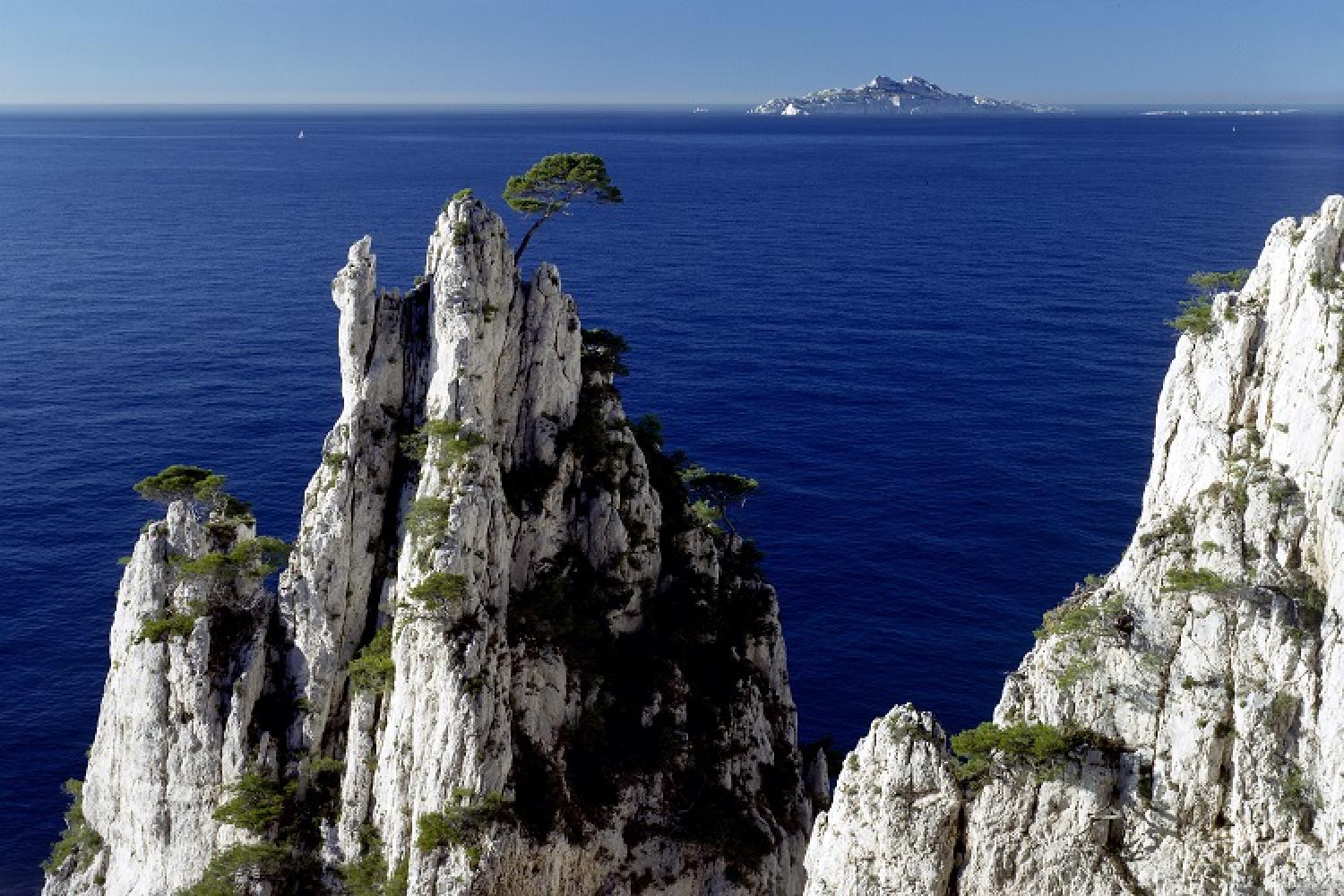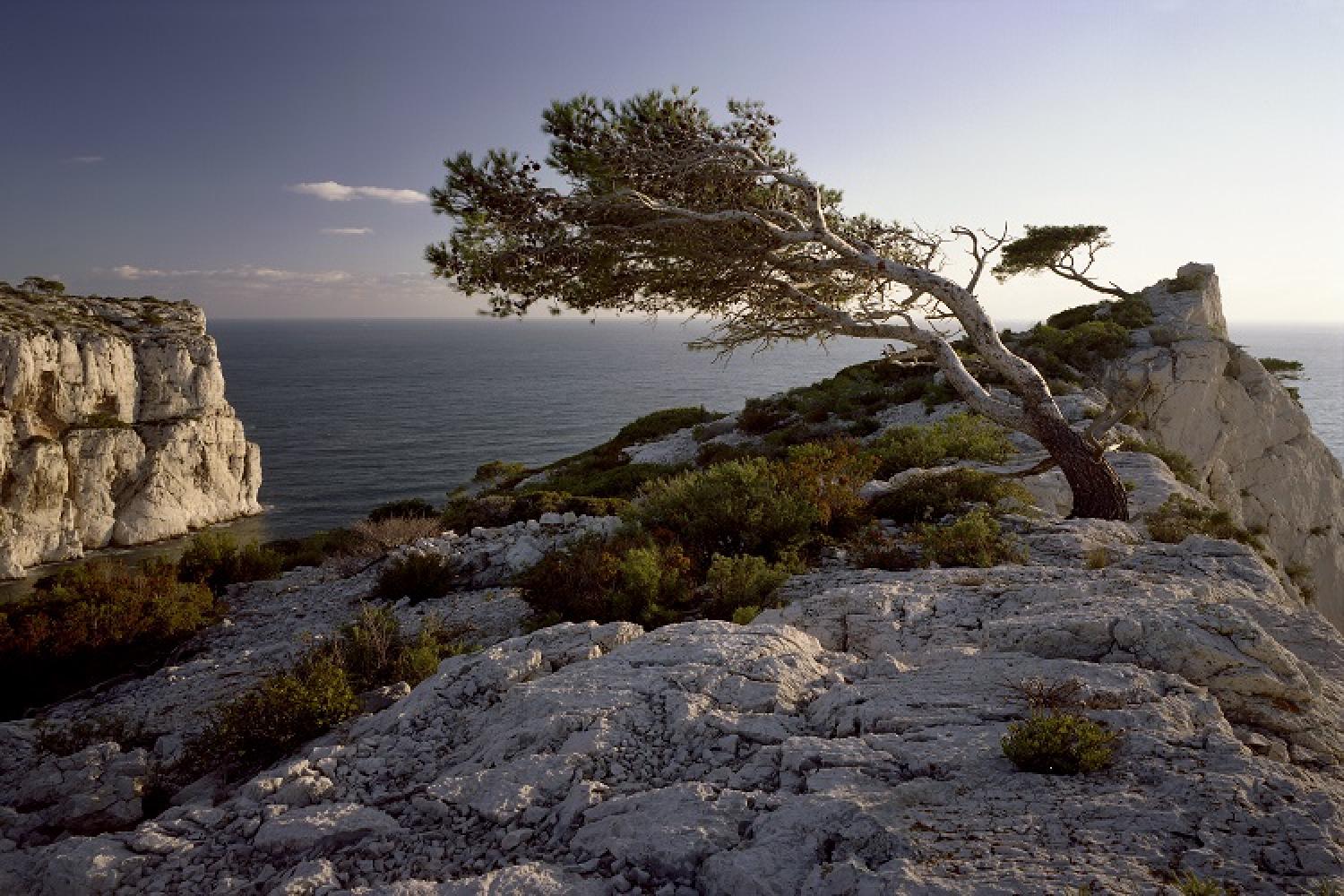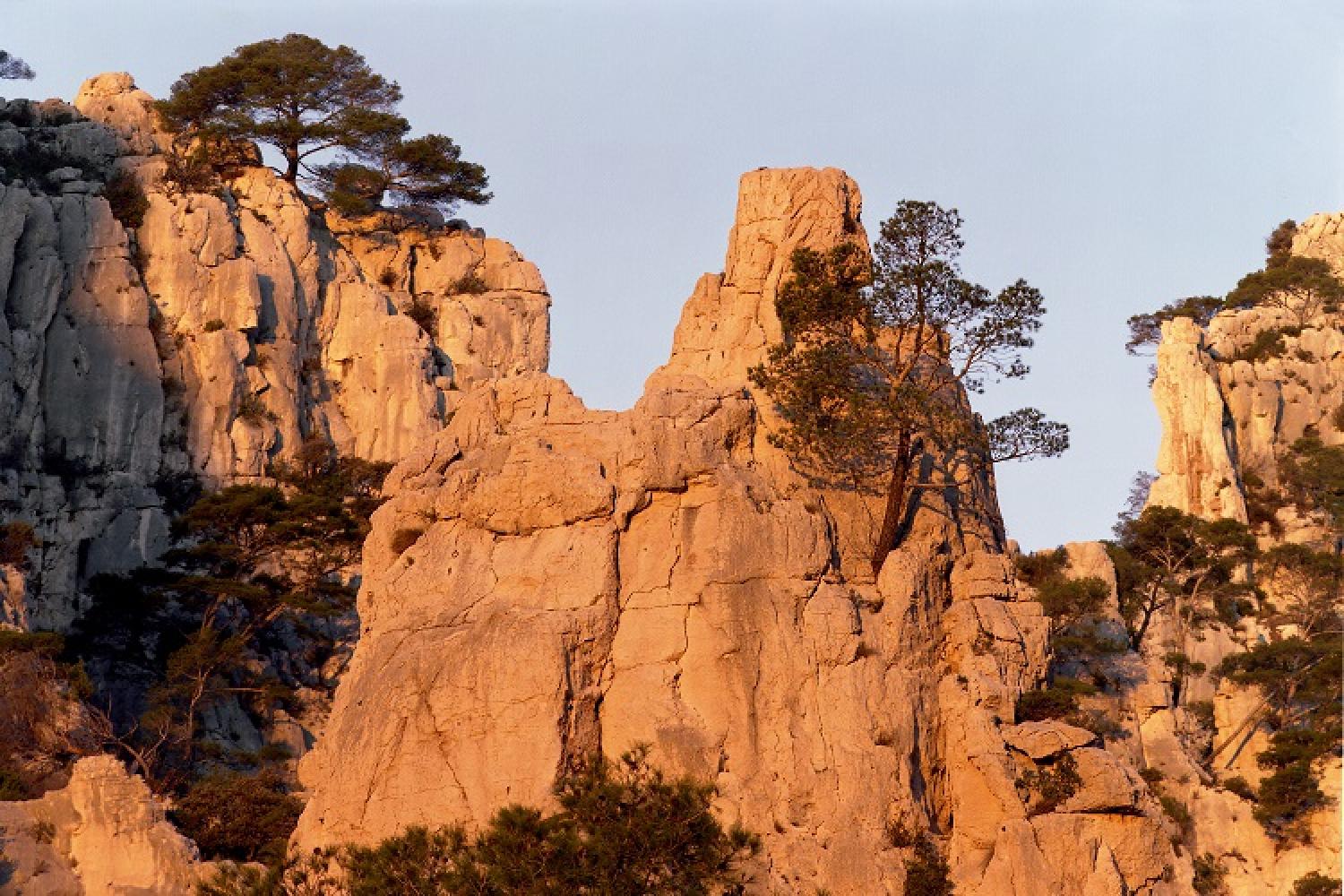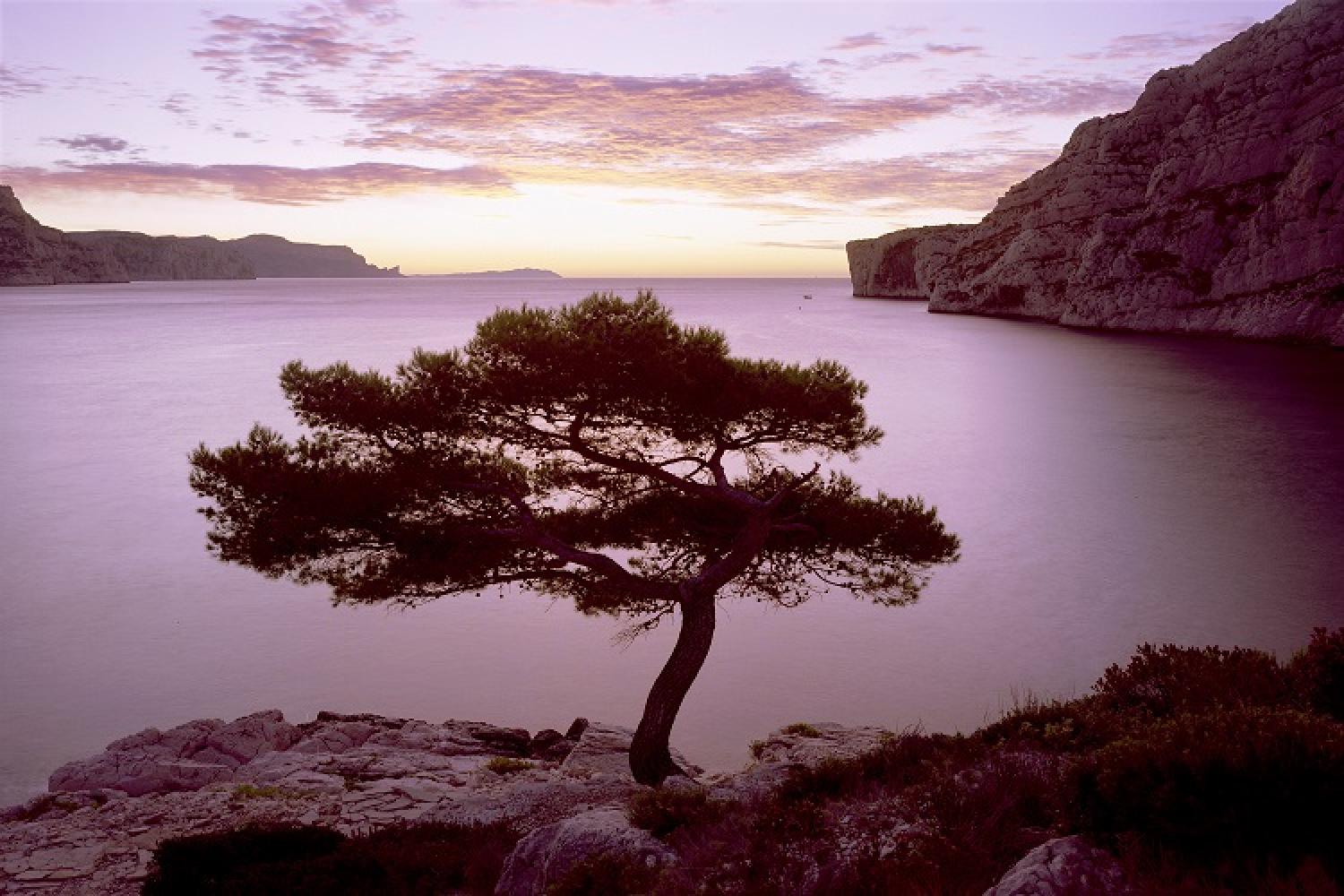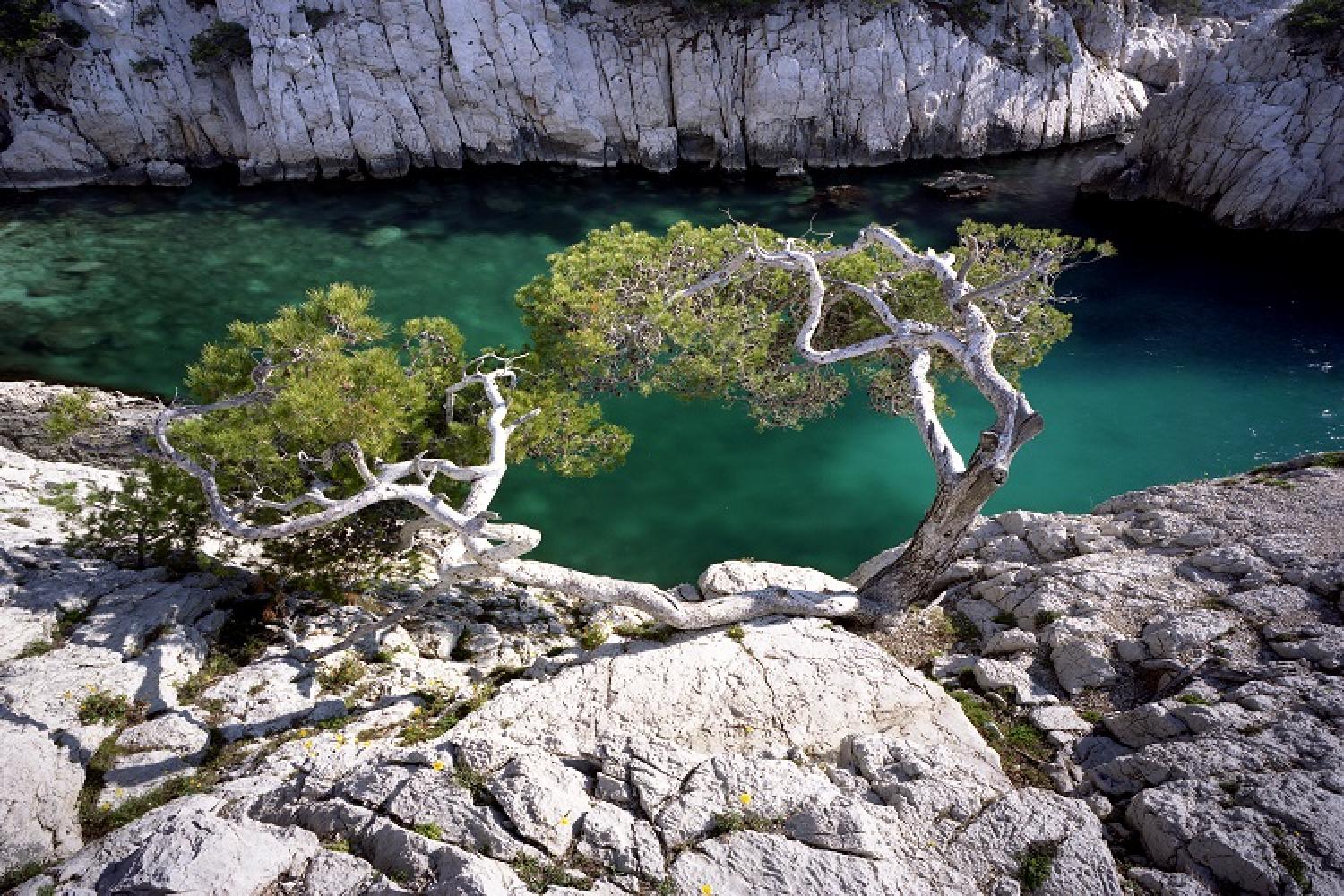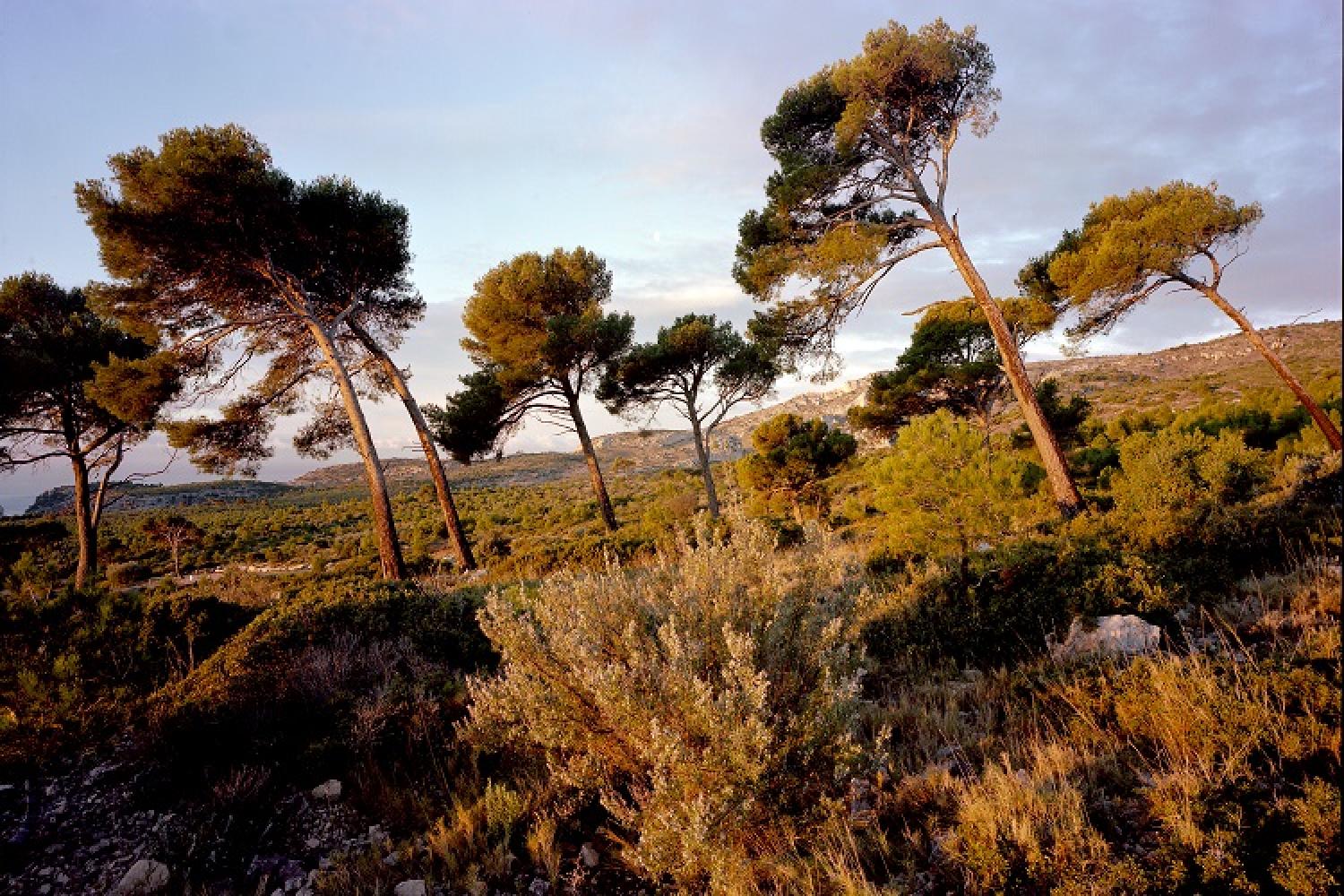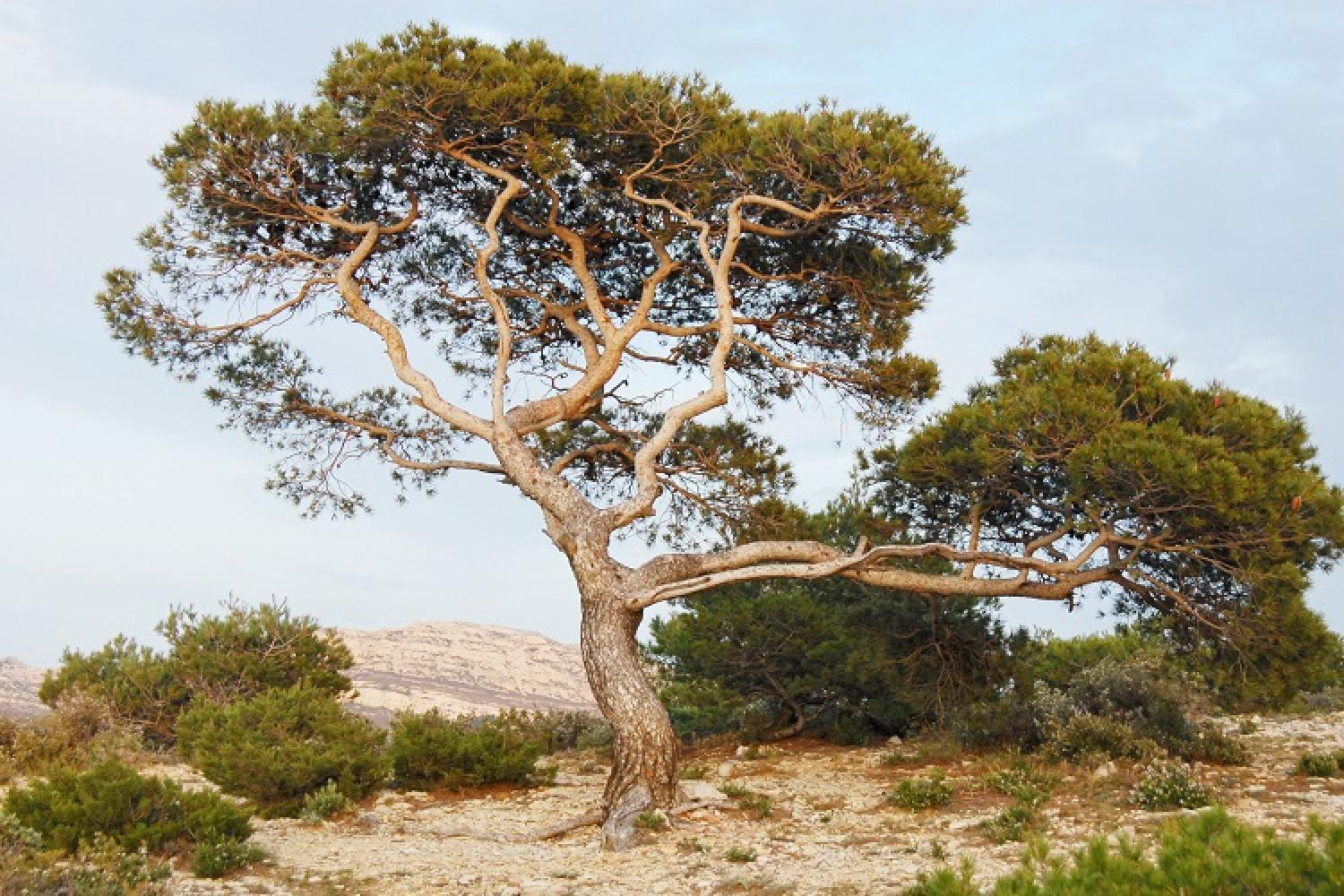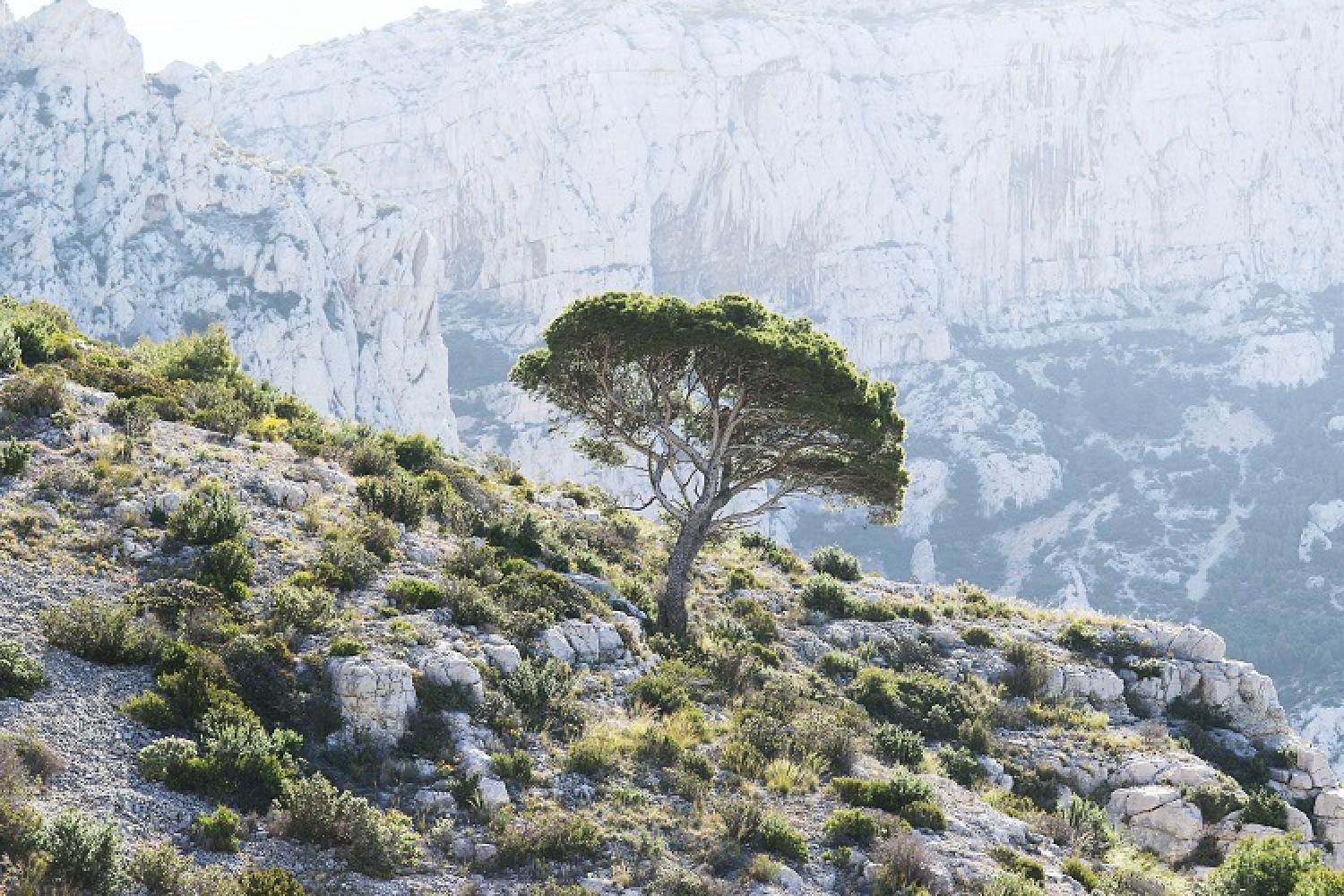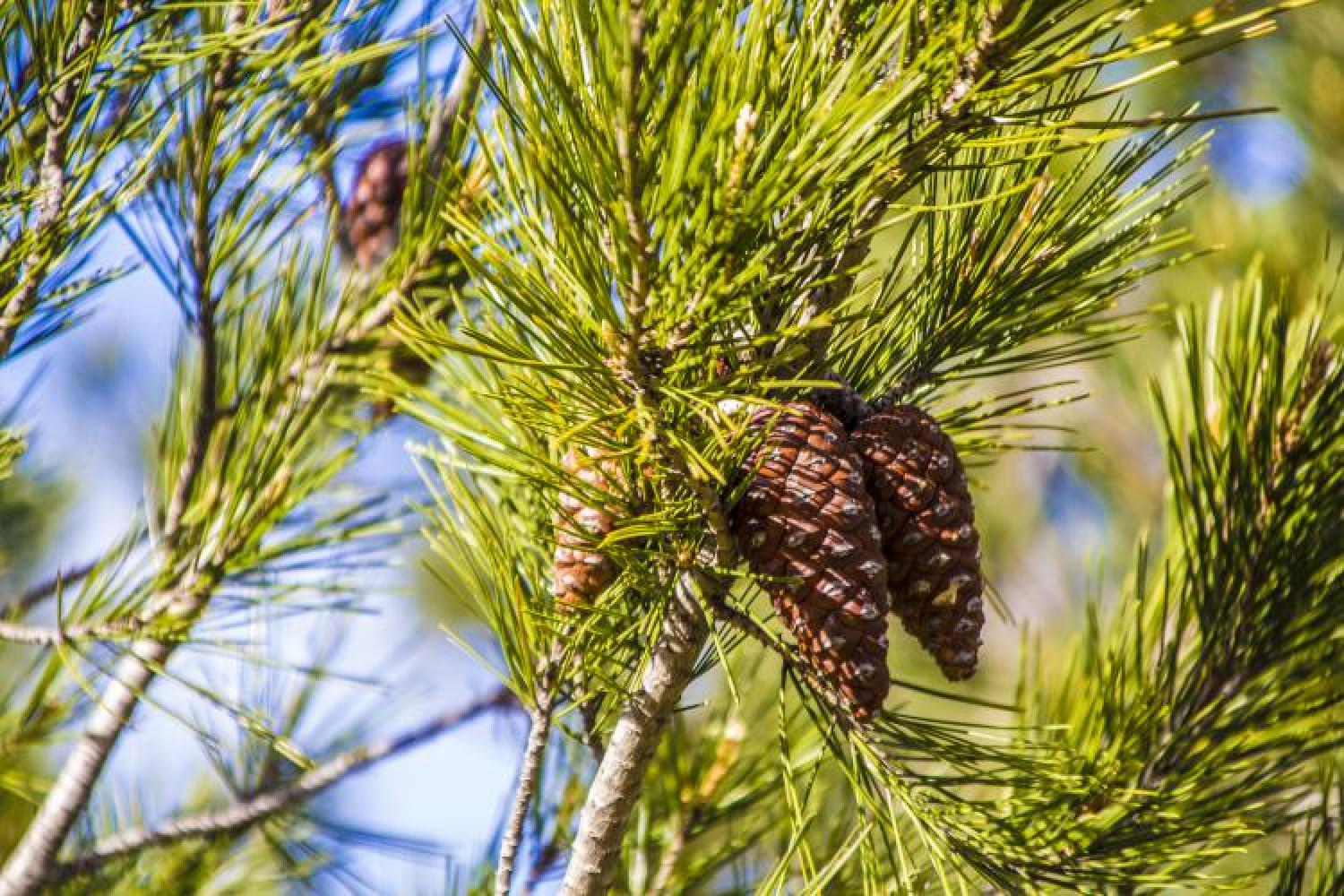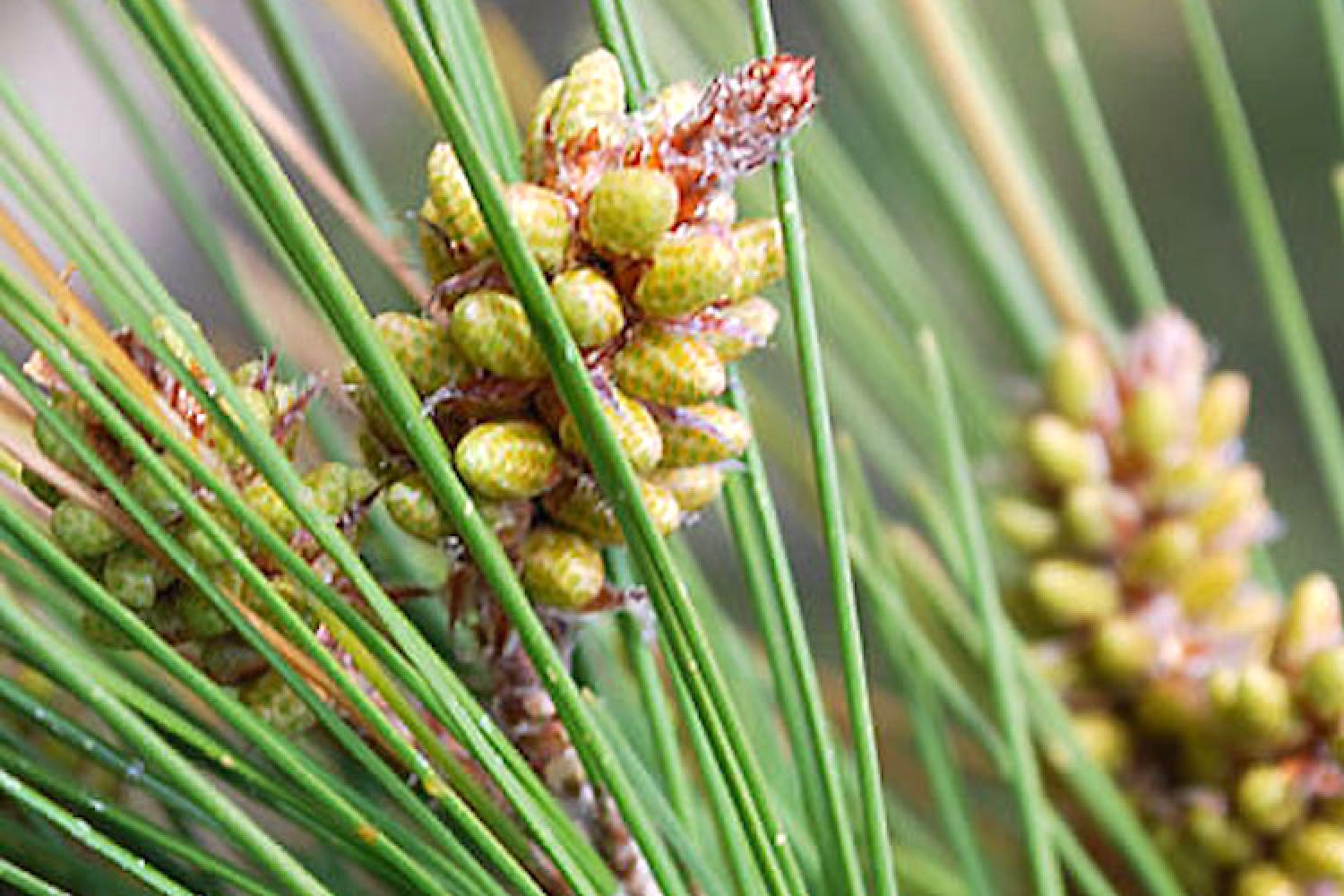Description
The Aleppo pine is the most abundantly growing tree in the Calanques. It is one of the only trees able to develop easily and naturally in limestone rock, where the soil is impoverished and dry. It is also able to grow on the sides of cliffs where it flourishes in the sun. It can be recognised by its shape sculpted by the wind and its greyish-brown ochre-stained bark. Its cone-shaped flowers become pine cones which grow for two years on the tree. The seeds have small wings which enable them to be disseminated by the wind. The Aleppo pine is burns very easily but regenerates rapidly following a fire. Fire encourages the cones to open thereby liberating the seeds allowing the species to rapidly regrow on bare soil. Its name is the result of mistake made by by the Scottish botanist Philip Miller, because it is another species that grows in the Aleppo region. The Aleppo pin does indeed flourish on the Mediterranean coast, in particular in Spain and in Provence: it is also called the “white pine of Provence”.
Scientific name
Pinus halepensis
Where and when can you see it?
- Natural habitats: Green oak forest, climatic pine forest
- Flowering season: March to April
Did you know?
In the past, the bark of the Aleppo pine would be scored with a blade. Wounded, the tree would then secrete a resin used for healing purposes. This very pure resin was then transformed into a turpentine essence, from which medicines, cleaning products or solvents for paints were made.
Conservation stake
Medium
How can I help to protect it?
- I keep to the trails
- I look but I don’t touch




